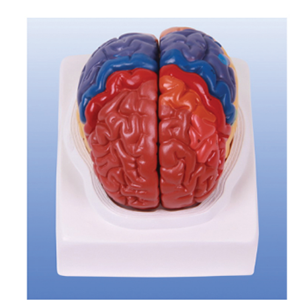

Article tag: Cortical zoning model| medical anatomical model|
As one of the core tools in the field of neuroscience, the development of cortical model has not only profoundly affected our understanding of brain structure and function, but also gradually promoted the comprehensive transformation fr...
As one of the core tools in the field of neuroscience, the development of cortical model has not only profoundly affected our understanding of brain structure and function, but also gradually promoted the comprehensive transformation from basic research to clinical application.
With the deepening of the research, it began to gradually transform into clinical application. In the study of neurodegenerative diseases such as Alzheimer's disease and Parkinson's disease, scientists have used these models to track changes in the structure and function of the cerebral cortex during the course of the disease, providing an important basis for early diagnosis and intervention of the disease. In addition, in the field of neurological rehabilitation, cortical model is also widely used to develop personalized rehabilitation programs to promote the recovery of damaged nerve function by stimulating or inhibiting the activity of specific brain areas.

In clinical surgery, it also plays an important role. Especially in neurosurgery, precise cortical zoning is essential to protect critical brain regions and avoid surgical complications. Doctors can use these models to conduct preoperative planning, determine the surgical path and the scope of resection, and thus improve the safety and effectiveness of surgery.
In addition, it promotes the cross-integration of neuroscience and other disciplines. In the field of education, for example, researchers are beginning to explore how to use cortical zoning models to optimize teaching methods and improve student learning. In the field of artificial intelligence, scientists are committed to developing intelligent algorithms based on the principle of cerebral cortex partitioning to simulate human cognitive processes and promote the further development of artificial intelligence technology.
To sum up, as an important tool of neuroscience research, its transformation process from basic research to clinical application not only shows the great potential of science and technology, but also provides us with unprecedented opportunities to understand and treat neurological diseases and improve human cognitive ability. With the continuous progress of technology and in-depth research, we have reason to believe that the cerebral cortex model will play a more important role in the future, and make greater contributions to human health and social development.